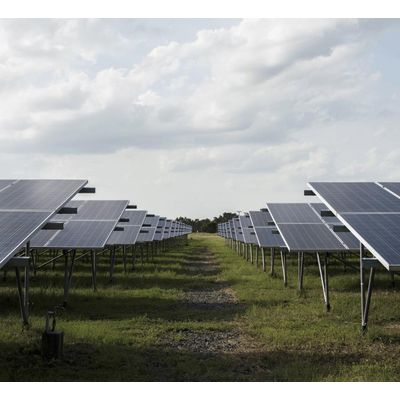

- Home
- Companies
- Contendre Solar, Inc
- Applications
- Solar Solutions for Utility Scale - ...

Solar Solutions for Utility Scale - Energy - Energy Utilities
Utility-scale solar plants use solar photovoltaic (PV) technology or solar thermal technology to generate electricity.
Solar utility-scale refers to large-scale solar power plants that generate electricity from sunlight and distribute it through the power grid to customers. These plants typically have a capacity of several megawatts (MW) to hundreds of megawatts and are designed to provide power to utilities or large-scale commercial or industrial customers.
Utility Scale Energy
Providing Ready-to-Use Solar Systems
Utility Scale solar installations are the largest scale of Solar Energy projects. Utility scale solar installations are huge setups, with the capacity to produce anywhere above 5 megawatts (MW) of solar energy.
Utility Scale solar plants offer the added advantage of consistent electricity prices even during peak demand periods. In contrast, electricity generated from fossil fuels and other traditional sources is the most expensive during such excessive demand phases.
Utility consumers have therefore recurrently endorsed investments in Utility Scale solar plants.
Apart from the massive energy generation capacity, the distinguishing factor of Utility Scale installations from distributed generation projects like Residential and Commercial scale installations is the fact that the electricity generated by the installation is not consumed at the host site. Depending on the geographic location of the installation, the energy produced at a Utility Scale solar setup is either sold to wholesale utility buyers via a Power Purchase Agreement (PPA) or owned directly by an electrical utility company. It is eventually distributed to end use consumers such as residential, commercial, and industrial ratepayers connected to the grid.
- Reduced Utility Electricity Bill.
- Job opportunities creation
- Innovation and New Technology push
- Hedge against increasing Electricity and Diesel Tariffs
- Reduced dependency on grid power
- Long term reliable power source
- Option for revenue generation through Net Metering Framework
- Security through localised generation
- New Business models & opportunities
- Enable DISCOM to meet its Renewable power purchase obligations.
- Minimal transmission losses as power generation is near the place of consumption
- Improved tail end grid voltage and reduction in system congestion.
- Reduced pressure on Grid because of decentralised power generation.
- Better Load management.
- Grid Stabilisation.
